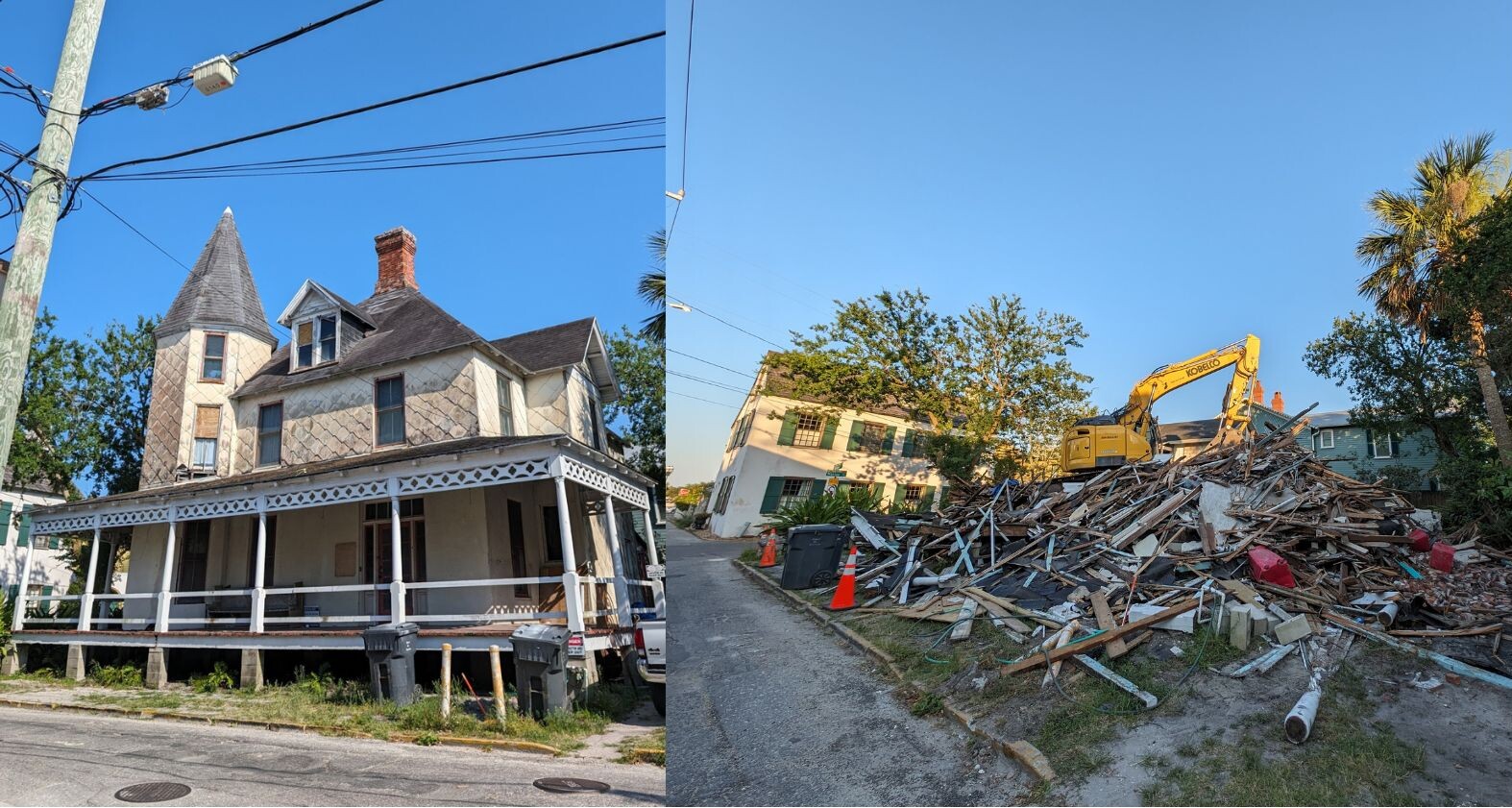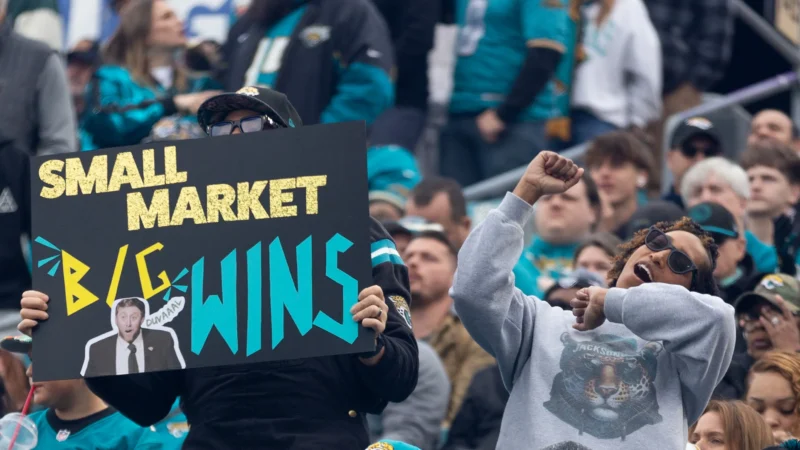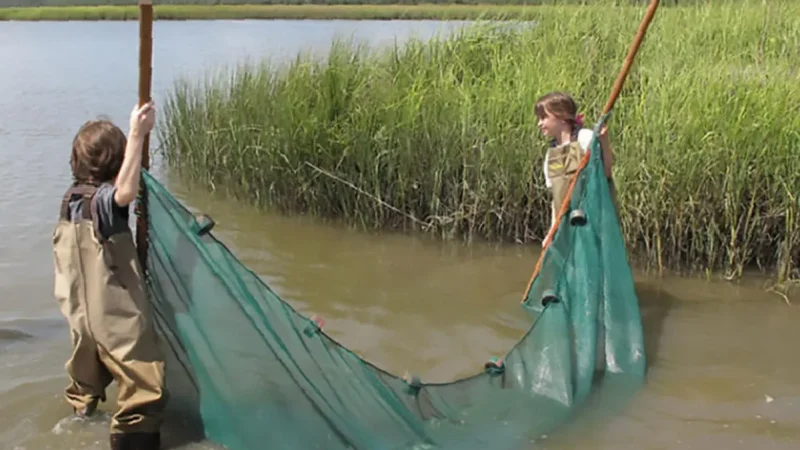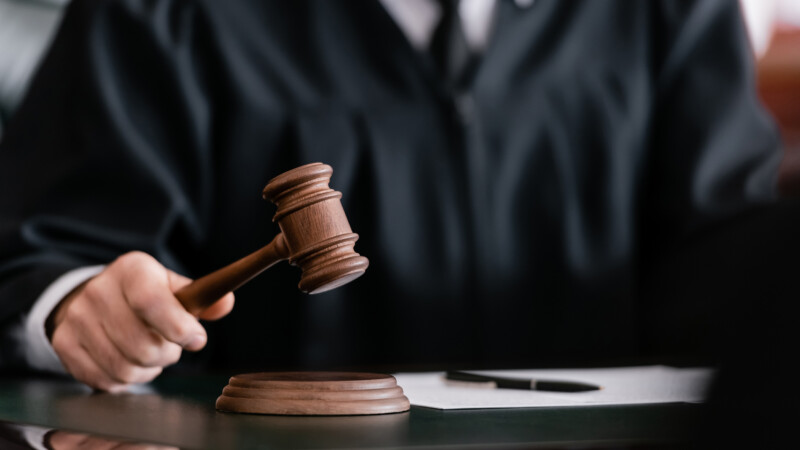From the Castillo de San Marcos to the Lightner Museum, St. Augustine is known for its historic buildings. So, when a home built in 1889 is suddenly torn down without a public hearing, it only makes sense that locals are up in arms.
That includes the St. Augustine City Commission, some of whom were caught flatfooted.
“It kind of gives the commission, to me, a black eye that we didn’t know anything about this, and we’re getting bombarded with emails after the fact,” City Commissioner Cynthia Garris said Tuesday, more than two weeks after the demolition of the home at 11 Bridge Street. “We can’t bring the house back, of course, but we can make sure this doesn’t happen again.”
Normally, the demolition of a historic building would require the approval of the city’s Historic Architectural Review Board, but 11 Bridge Street circumvented that process. Its demolition was OK’d by Chief Building Official Buddy Schauland Jr. after he received an engineer’s report stating that the structure was at “high risk” of collapse.
He received that report in April, and on June 8, 11 Bridge Street was reduced to a pile of rubble.
The Florida Building Code gives building officials the jurisdiction to OK demolitions without oversight, but Schauland said it’s something the city does only when it absolutely has to.
What does it matter?
In a city full of historic buildings, 11 Bridge Street was far from the most notable building on St. Augustine’s streets. Still, the building dated back to the 19th century and had ties to French nobility.
According to data compiled by the Historic St. Augustine Preservation Board in the 1970s, it was the Countess of Montjoye, a French aristocrat, who purchased the lot in 1888. The countess rented the space to a number of residents after its construction, including one of the city’s mayors and an associate of Henry Flagler’s.
A 1889 article from the Jacksonville Times-Union even reported the discovery of buried treasure in the form of “doubloons … about the size of a double eagle in American money, but … not so heavy.”
Nearly 150 years later, the building’s structure was in bad shape, Schauland said, and it had only gotten worse since the last time a report was put together in 2022.
“I’ve always been a firm believer that you can fix almost anything, and you could go in and fix this house, but the structural engineer is saying that the house could collapse just by one worker going in there to try to fix it,” Schauland told the City Commission. “If that was a collapse, it could kill that worker that was in there.”
Mayor Nancy Sikes-Kline said the situation was unfortunate because an inability to send someone from the city inside of the building meant that there would never be full confirmation that 11 Bridge Street’s condition was as bad inside as it was outside.
While Schauland examined the building from the outside, the city’s idea of the interior was informed only by an engineering report from a private engineer. That engineer would have been hired by the property owner, Pat Dobosz, the former owner of the Kenwood Inn in St. Augustine.
Historic Architectural Review Board Chair Gaere MacDonald called that a conflict of interest in a letter he sent to the City Commission, Schauland and other city staff in April.
If the building was at risk of collapsing, MacDonald said, it was Dobosz’s responsibility to fix that as its owner, especially if it had deteriorated since she purchased it in 2016.
“I am just stunned at the greed and avarice being displayed here and it should not be rewarded,” MacDonald wrote. “I am absolutely sickened and fed up with people coming down here from the north and destroying our history, culture and heritage purely to line their pockets. These are modern day carpet baggers, and this must stop before they destroy the whole city piece by piece. Death by a thousand cuts.”
MacDonald said he had spoken with prospective buyers for 11 Bridge Street, and while it would take a lot of work — and cash — the property was worth saving.
“In my visits to the site there is no question that this building could be and should be saved,” he said in his letter dated April 21.
Over the course of the following month and a half, Schauland issued a demolition permit, the city conducted an archaeological review of the site and, on June 8, the building was demolished.
Two weeks later, at a City Commission meeting June 24, commissioners voiced MacDonald’s same concern over the lack of a second engineering opinion.
Schauland said it wouldn’t really have mattered.
“We don’t always seek a second opinion. If I can go over there and determine what they’re producing on the report is what is actually there, and with my experience with construction I rely on that,” he explained. “If there is a second report … the outcome might not have been the same with what they thought, but they would have … saw the same problems that were going on with the construction.”
Speaking before the City Commission, former Flagler College Director of Historic Preservation Leslee Keys said a second opinion could have made a difference.
“If someone was diagnosed with a terminal illness, it is likely that person would seek a second opinion,” she said. “In the case of 11 Bridge Street, that option was rejected.”
While the demolition wasn’t brought before the city’s Historic Architectural Review Board, city staff confirmed that any new construction at 11 Bridge Street would have to be.
Jacksonville Today was unable to reach the building’s previous owner, Pat Dobosz, for comment, but speaking with First Coast News earlier this month, Dobosz said she rejected the idea that its demise was due to demolition by disregard.
“That is absolutely not the case,” she said. “We tried to manage it as best we could over the years to prevent further deterioration.”
A lesson in all this?
Amid public outcry over the demolition of the historic building, city leaders looked for a way to learn from the situation.
“It just seems ridiculous, to me, that that house was demoed,” City Commissioner Garris said.
Although the discussion turned toward punitive measures that could have taken, City Manager David Birchim cautioned against it.
“We can’t fine ourself out of this problem. I just want to make that clear to everyone,” he told city commissioners. “We prefer the incentive route rather than the punishment route, because the punishment route is not controlled by us — it’s controlled by Tallahassee.”
State statute sets a limit on the fines municipalities are allowed to issue to the owners of dilapidated properties. Sure, Birchim said, the city could have fined Dobosz $250 per day until she put in the time, effort and funds to fix up 11 Bridge Street. But that process is lengthy, and then the city would be caught up in the back and forth of the property owner trying to get the lien forgiven.
The reality, Birchim said, is it would be cheaper for a property owner to demolish a historic home and then ask for forgiveness then to go through the rigamarole of the existing code enforcement infrastructure.
What he encouraged the city to lean on are incentives like grants and the Fix-It-Up program offered in the Lincolnville neighborhood.
That program, which is planned to be extended to the West City neighborhood, provides assistance to income-qualified homeowners to keep homes safe and keep homeowners in place.
In addition, Mayor Sikes-Kline encouraged the Historic Architectural Review Board to take a hard look at the rules in the city code regarding the demolition of historic structures to see if any tweaks could be made to keep everyone, from the public to city leaders, more aware of the process.
“This dialogue that we’re having today, if there’s any benefit to it, it does call into question what other structures are similarly threatened. I’ve already talked to Julie about taking a look at buildings inside the city that would also be threatened because of deferred maintenance, and maybe we can identify those now and at least pay attention to them and talk to the property owners.”
Editor’s note: As of June 4, Pat Dobosz is no longer the owner of 11 Bridge Street, according to the St. Johns County property appraiser. Dobosz sold the plot for $695,000 to 11 Bridge Street Land Trust. The story has been corrected to indicate that she is no longer the landowner.







